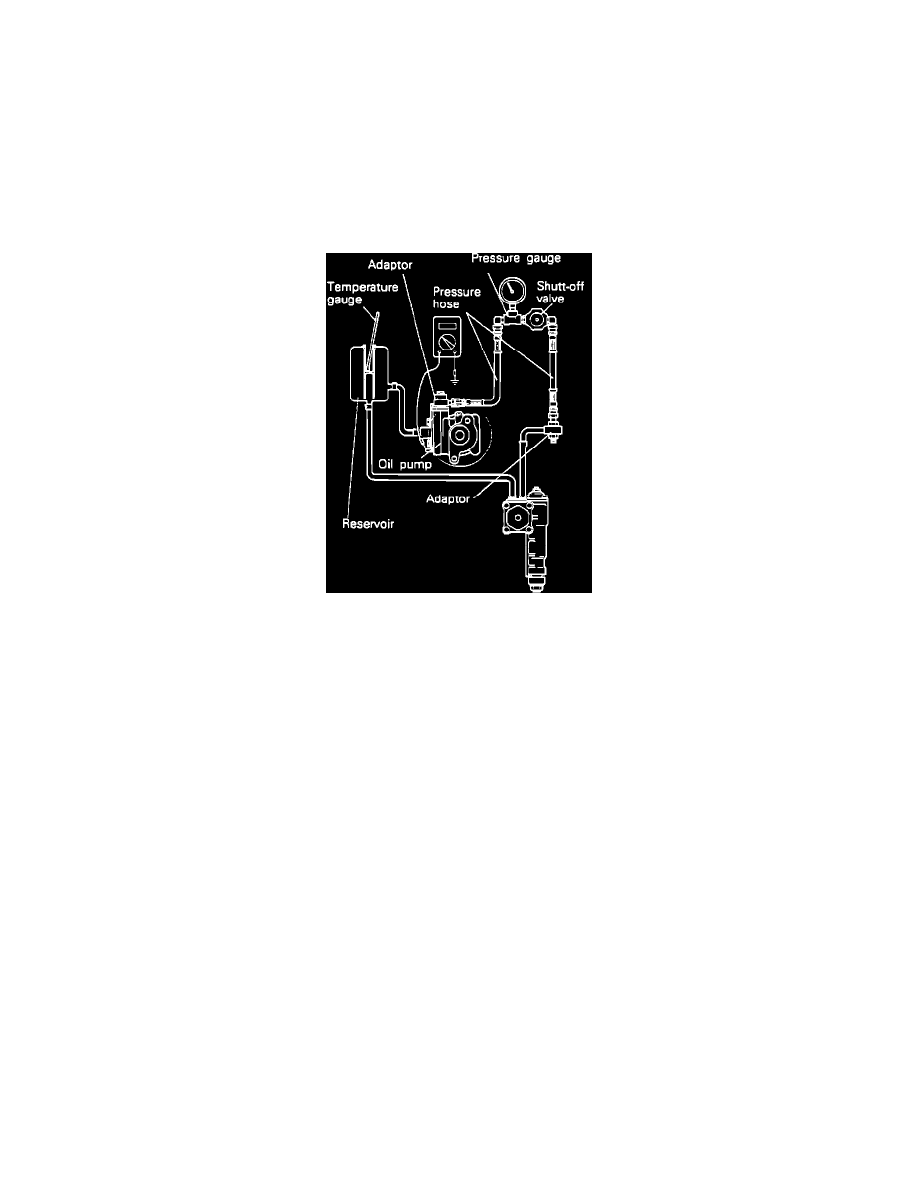Colt L4-1795cc 1.8L SOHC (1994)

3. With the steering wheel in a straight ahead position, check for continuity between the pressure switch terminal and body ground. There should
NOT be continuity.
4. With the steering wheel in a turned position, check for continuity between the pressure switch terminal and body ground. There should be
continuity.
5. If the tests results are other than specified, connect an oil pressure gauge to verify oil pump delivery pressure is within specifications.
POWER STEERING PUMP PRESSURE CHECK
1. Disconnect the pressure hose from the oil pump.
Testing The Oil Pressure Switch
2. Install the pressure gauge with a shut-off valve between the oil pump and the disconnected hose.
NOTE: Adaptors may be required.
3. Start the engine and let it idle.
4. Bleed the air from the system.
5. Bring the temperature of the fluid up to 122-140°F (50-60°C) by turning the steering wheel back and forth while the vehicle is stationary.
6. Disconnect the Oil Pressure Switch electrical connector and install an ohmmeter to the Pressure Switch connector.
7. Gradually close the shut-off valve of the pressure gauge to increase the hydraulic pressure.
Check whether the hydraulic pressure that activates the switch is at the standard value.
Continuity at 213-284 PSI. (1.5-2.0 MPa)
8. Gradually open the shut-off valve to reduce the hydraulic pressure.
Check whether the hydraulic pressure that deactivates the switch is the standard value.
No Continuity at 100-171 PSI. (0.7-1.2 MPa)
9. Remove the gauge and hoses. Torque the pressure hoses to specifications.
Refer to SPECIFICATIONS/MECHANICAL.
10.
Bleed the system
